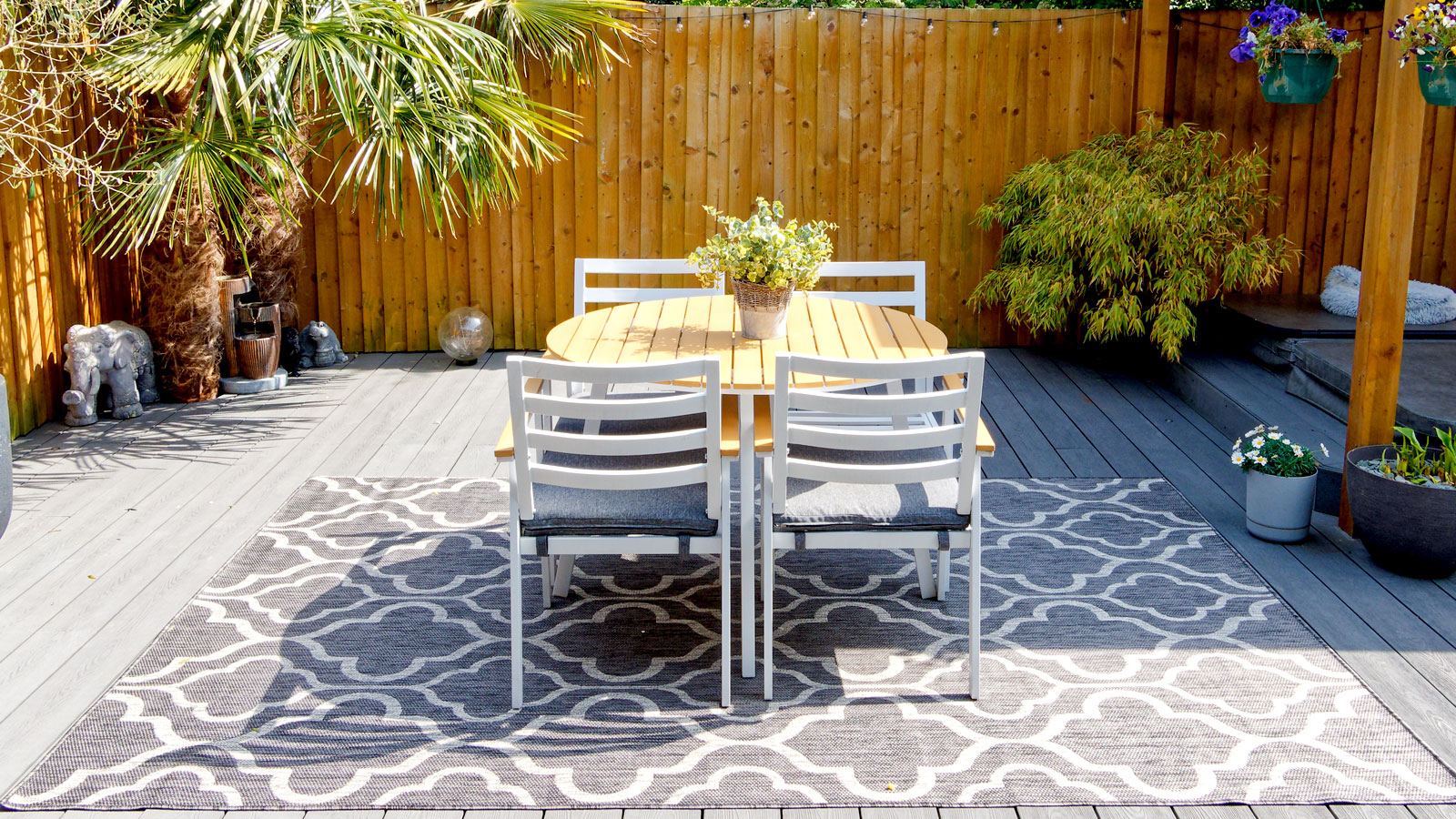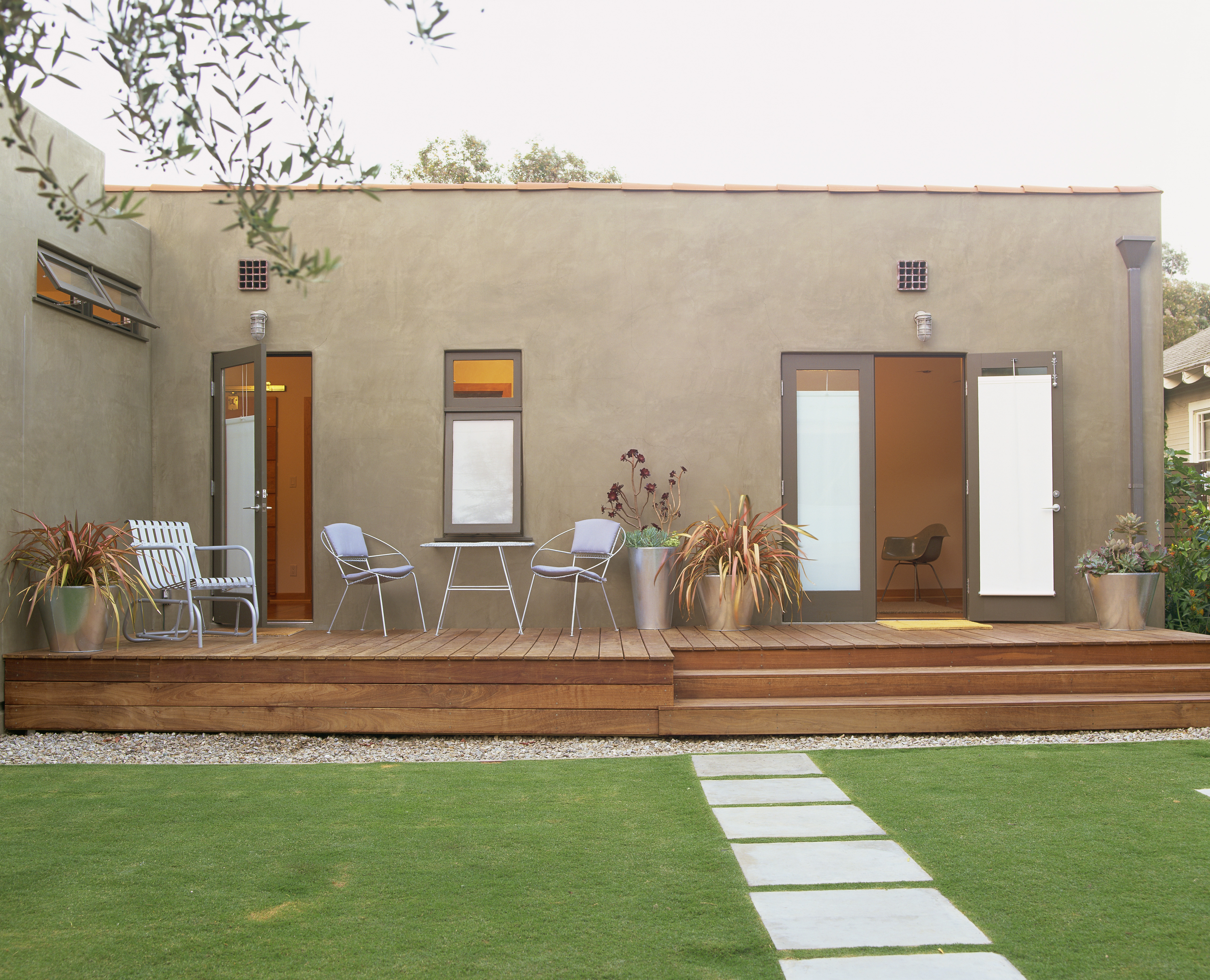When do you need planning permission for decking? Experts reveal when you do and when you don't
Do you need planning permission for decking? Most of the time, the answer is no, but there are times when you will. Find out more

If you’re thinking of building a new deck, you’ll probably not be thinking about planning permission for decking. And, most of the time, it's not something that you need to worry about. But, there will be times when you will need to.
Typically, your next great garden decking idea will fall under permitted development. But factors can come into play that will determine whether you need to get planning permission for your new deck. Size and height are the two common factors that will decide the outcome.
Here, the experts give you insight into what you need to know to ensure that you get planning permission if you need it.
Do you need planning permission for decking?

Peter has been a gardening franchisee at Fantastic Gardeners (part of Fantastic Services) for 8 years, growing his knowledge throughout these years. He now manages six teams, which are top performers in their field.
Many minor improvement works to our homes are covered by permitted development, meaning you do not need to apply for planning permission. Adding decking can fall under permitted development, but there are caveats — the height and size of your decking being two.
Peter Ivanov, Gardening and plant expert at Fantastic Gardeners, says, "You’ll typically need planning permission for decking or raised platforms if the decking is more than 30cm (about 1 foot) above the ground.” He adds, “And if the decking, combined with other extensions, sheds, and outbuildings, covers more than 50% of the total garden area.”
Decking to the front of the house – the 'principle elevation' – may require planning permission too. So may decking which adversely impacts neighbouring homes (i.e. if it creates issues around privacy and overlooking).
Decking height should be measured from the lowest point of ground (even on a sloping plot) to the top of the timber or composite material. (Researching how to build decking will help you work out the finished height of a deck.)
If you're building on a sloping site or perhaps adding decking where the garden is at a different level to the house, you may find your decking will be above 30cm and as such is considered a 'raised platform' and needs planning.
"If you do need planning permission you should contact your local planning authority (LPA), which is typically part of your local council, " says Ivanov. He adds, "You can apply for planning permission directly through the UK's Planning Portal website, which simplifies the process." However, to avoid issues, consult with your council’s planning department before starting the project.
Homes in designated areas such as national parks or conservation areas, or properties where an 'Article 4 Direction' has been applied, could be subject to further restrictions.
There are other circumstances in which planning permission will be required — adding decking in the garden (or curtilage) of a listed home, for instance, will not be covered by permitted development.

Try these to help build your deck

A basic mitre saw ideal for cutting wooden and composite decking. It has a maximum cross cut of 125mm and cutting depth of 55mm.
How big can decking be without planning permission?
Even if your planned decked area is below 30cm tall, the size of the new outdoor space will also be under consideration. Ivanov says, "Without planning permission, decking (combined with other outdoor structures) must not cover more than 50% of the total garden area surrounding the house." He adds, "This limit includes both front and back gardens, so it's essential to factor in existing sheds, outbuildings, and extensions." If this is the case, you will need to submit a planning application.
Allan Jeffrey, MD at Ultra Decking adds, "In national parks, the maximum area that can be covered more than 20m from your house is limited to 10m2."
So, if you're looking to save on decking costs, building within these restrictions should save around £250 on a planning application.
How high can I build a deck without a rail?
A deck can be built up to 59cm high without a hand rail, but any decking higher than that will need to install a hand rail of at least 110cm above the decking board to comply with planning permission.
Tall decks might also require steps, stairs or decking balustrade ideas, which also require Building Regulations approval to ensure safety.
Why do you need planning permission for decking?
"When you come to sell your house, you will be asked if you have planning permission for the decking [if required], which can cause complications with the sale of your property if you haven't," explains Jeffrey. "Planning permission is significant for safety and to ensure your property isn’t impacting on the environment or any neighbouring properties."
If decking has been built over the guidelines without gaining planning permission, homeowners can apply for retrospective planning permission. However, this doesn't guarantee that it will be approved, and if refused, the decking will have to be removed.
If you’re planning to add a new deck, you will need to know how much you need to budget for decking costs. Take a look at these decking composite ideas and small decking ideas for inspiration for your new deck.
Get the Homebuilding & Renovating Newsletter
Bring your dream home to life with expert advice, how to guides and design inspiration. Sign up for our newsletter and get two free tickets to a Homebuilding & Renovating Show near you.
Amy is an interiors and renovation journalist. She is the former Assistant Editor of Homebuilding & Renovating, where she worked between 2018 and 2023. She has also been an editor for Independent Advisor, where she looked after homes content, including topics such as solar panels.
She has an interest in sustainable building methods and always has her eye on the latest design ideas. Amy has also interviewed countless self builders, renovators and extenders about their experiences.
She has renovated a mid-century home, together with her partner, on a DIY basis, undertaking tasks from fitting a kitchen to laying flooring. She is currently embarking on an energy-efficient overhaul of a 1800s cottage in Somerset.



